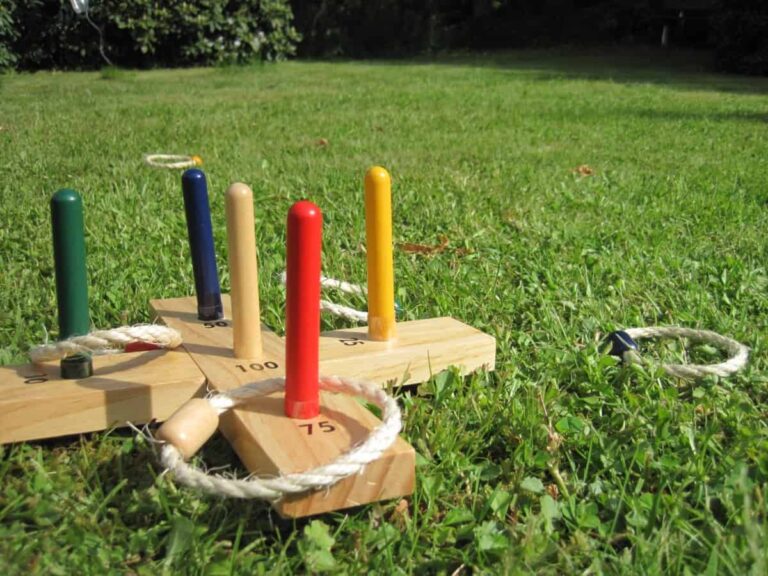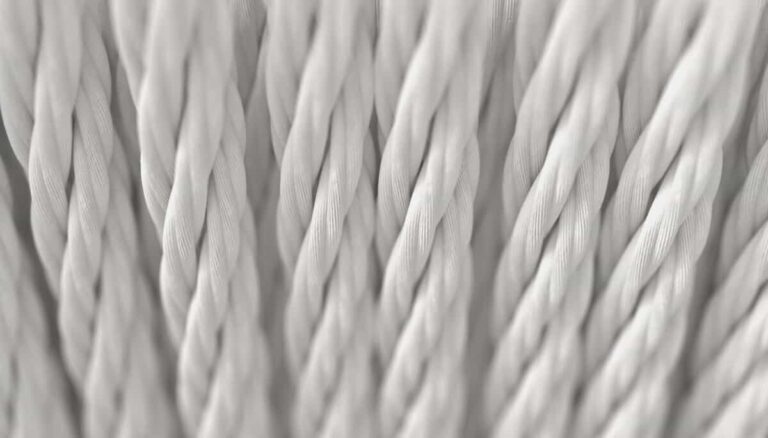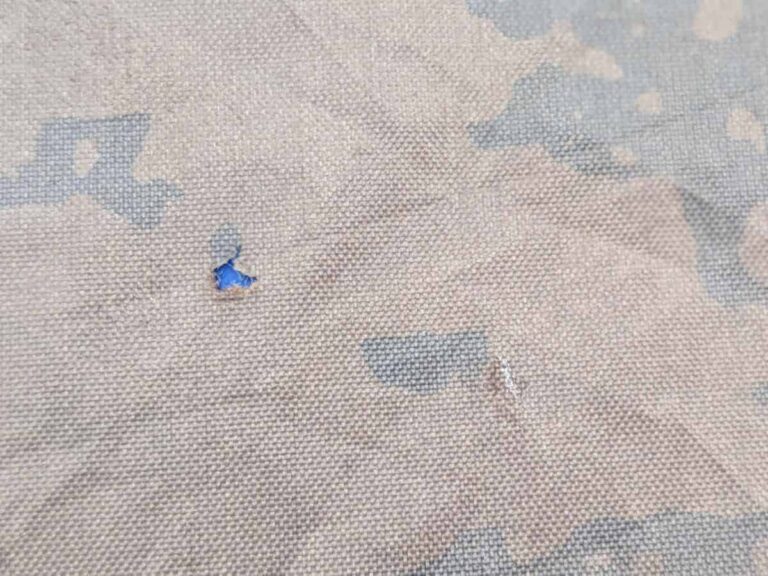What to Look for in a Camping Ax
Let’s cut to the point. There are tons of different axes out there, and they all have their pros and cons–which axes are best for camping? We’ll go over axes and hatchets as well as some pros and cons for different ax attributes.
Choosing an ax for camping means considering weight, length, ax head style, handle material, and of course, price.
First, before choosing the type of ax you want, it helps to have a reference of ax terminology. I made a diagram you can use as a reference for this discussion of what type of ax you want to get.
- Do You Need an Ax?
- What’s in an Ax Name?
- What Are Your Ax Needs?
- Ax Ramp/Cheek Thickness
- Ax Haft Length
- Ax Haft Material
- Ax Haft Thickness
- Ax Weight
- Blade Shape
- Can I Use My Ax as a Baton?
- Ax Head Quality and Balance
- Recommended Axes for Camping
- Must-haves with an Ax

| Ax Part | Description |
| Heel of Haft | The haft, also known as the handle, is the part of the ax that you grip. The heel of the haft is the part of the haft closest to you if you are pointing the sharp end of a single-bit ax away from you. Imagine a foot stepping towards the bit to remember which side is the heel and which side is the toe. |
| Toe of Haft | The haft, also known as the handle, is the part of the ax that you grip. The toe of the haft is on the same end of the ax as the sharp end for a single-bit ax. Imagine a foot stepping towards the bit to remember which side is the heel and which side is the toe. |
| Belly | This is the mid-section of the haft on the same side of the bit (the toe end of the haft) |
| Neck | The neck is the section of the haft opposite from the shoulder, on the same side of the bit, right next to the ax head. |
| Shoulder | The shoulder is the section of the haft opposite from the neck, on the heel edge of the haft, close to the ax head. |
| Beard | The beard is the bottom edge of the inside of the bit. It is sometimes curved and is sometimes straight. |
| Heel of the Bit | The heel of the bit is the bottom of the sharp portion of the bit if the ax was standing on its handle. Again, imagine the bit like a foot, with the heel on the bottom, and the toe on top. |
| Toe of the Bit | The toe of the bit is the top end of the sharp portion of the bit if the ax was standing on its handle. Again, imagine the bit like a foot, with the heel on the bottom, and the toe on top. |
| Bit | This refers to the sharp edge of the ax. |
| Cheek/Ramp | The cheek, or ramp, is the longest flat edge of the ax head. The slope of the cheek determines cutting vs splitting power. The steeper the slope, the better for splitting, the shallower the slope, the better for cutting. |
| Eye | The eye of the ax is the hole in the ax head that the handle is wedged in. |
| Haft Wedge | The portion of the haft that is jammed into the ax head. |
| Poll or Butt | The flat rectangular edge opposite the bit. This side can be used as a hammer in hatchets, and even in some axes (mauls), although most ax polls are not meant to be used as a hammer. |
Do You Need an Ax?
This article is all about choosing the perfect ax for your camping needs. But first it’s important to understand what your camping needs are.
For many campers, an ax or a hatchet isn’t needed at all. If you’re car camping, you are generally bringing the wood with you that you want to burn (many campgrounds don’t allow you to collect dead firewood), and so if you’re bringing your firewood with you, you might not need to bring an ax or a hatchet for camping in the first place!
Furthermore, if you are a thru-hiker, meaning you are hiking very long distances, such as the AT trail, then you don’t need to bring a hatchet or an ax because often, thru-hikers aren’t building fires and want to bring as little weight as possible.
That being said, just saying you can live without an ax doesn’t mean you wouldn’t want one. An ax can come in handy while car camping, especially if your wood isn’t in very easy to burn sections. If you are wilderness camping at a base-camp, then an ax is incredible at splitting and cutting wood for shelter and for fire.
An ax is an indispensable and versatile tool. Your experience with an ax will depend greatly on the ax quality, as well as whether you choose the correct ax for your needs.
What’s in an Ax Name?
As I was doing research on axes, I learned that there are way more names for different types of axes than I have fingers and toes.
Is it a camp ax? Is it a hatchet? A felling ax? A tomahawk?
Understanding the different parts of the ax and their purposes and characteristics will help you better than if I tell you to look for an ax with a certain name.
The reason names can complicate things is that different manufacturers have different opinions on each ax category. So understanding the different parts of an ax will help you immensely.
What’s the Difference Between a Hatchet an and Ax?
Boiled down, a hatchet is just a smaller ax. However, it can be more complex than that.
As I was researching this topic, I found out that the answer to this question is controversial. Some define an ax as a tool that you use with two hands, but there are many “axes” that are meant to be used with one hand.
So, while I can’t tell you whether a particular ax manufacturer calls their ax a camp ax or a hatchet, I can tell you some of the things that most hatchets have in common.
- All hatchets are meant to be used with one hand
- Many hatchets have a flat, rectangular poll that can used as a hammer, or be hammered, itself.
- Many hatchets are not like axes in that they do not have a wedge through an eye. Instead, the entire blade is made of metal, including at least a portion of the haft.
What Are Your Ax Needs?
Splitting or cutting and chopping? This is the most important question in deciding on the size and shape of your ax.
Wood Grain
The grain of the wood is the direction that the fibers of the tree grow.

Generally, when you’re in the wilderness and you want wood for your fire, you want an ax that can cut through limbs or logs.
To be more specific, in the context of working with trees, cutting means If you are wanting to cut or chop through a log against the grain.
If you’re fortunate enough to have log rounds (the kind you can buy by the cord), then your main task is to split the logs into smaller sticks that you can use for firewood. Splitting means to split wood along the grain.
Here’s a quick visualization.

If you are car camping at a location for a long period of time and want to save on the cost of wood, you can buy wood increments of a cord (a cord of wood is a stack of wood 4ft wide and 4ft deep and 8ft long). In this case, the wood will be chopped into log sections and will need further splitting so they can be used in a campfire. If you’re in this situation, you might consider an ax that is meant for splitting. Even better, you probably want a maul and some wood wedges.
Ax Ramp/Cheek Thickness
The width and profile of the ax head determine the splitting power of the ax.
If the ramp slope of the ax head is sharp then the ax will push apart the fibers of the wood, which is ideal for splitting logs.
If the ramp slope of the ax head is gentle, then the ax will require less force to go deeper into the log, thus, a gentle ax head ramp means it’s better for chopping and cutting.

The better an ax is made for splitting, than the heavier the ax head will be, because of a thicker ax head profile. Many axes in this category are called “splitting axes”
The thickest type of ax meant for splitting wood is called a maul. Mauls are very heavy (8 lb ax heads or more), and they are not very sharp at all since their main purpose is to be heavy with a point so it can be driven into the wood.
Mauls are not super practical for hiking in the wilderness since they are so heavy, but could definitely be useful in situations where you either buy the wood by the cord and need to split it or if you are chopping downed trees into logs.
What’s the Ideal Camp Ax Width for Camping?
If you are in the wilderness, most of your needs will be an ax that can chop and cut. Both for reasons of weight and because you are not dealing with log rounds in the wilderness–most of the time you are chopping limbs off of trees. Splitting needs to also be done in every case, but the primary use of your camping ax will be for chopping.
Some will bring two axes, one for splitting, and one for chopping.
If you are car camping, it’s not super practical to bring a maul with you car camping, but it does make sense if you are car camping for extended periods of time and are going through loads of firewood.
Even if you have a maul, though, you are going to want a smaller ax to split your firewood into sticks into kindling.
For general car camping, you want an ax that’s in the middle of the road as far as ramp thickness. If you want to only use one ax, then I’d favor a chopping ax over a splitting ax.
In fact, many casual campers find that a hatchet will fulfill most of their needs. And instead of felling trees or chopping downed trees, using your body weight, leverage, and some muscle to break the tree into smaller pieces, and then using the hatchet to split the wood into kindling. If you are unsure how big kindling is, check out our in-depth post on making a campfire here.
Ax Haft Length
Choosing the length of your ax is important, as you could end up with an unwieldy tool that doesn’t work for the job. Let’s dive into a couple of reasons why haft length matters.
Ax Length and Safety
The most important rule of thumb in choosing how long your ax should be is to find an ax length you are comfortable with.
Remember, though, that almost counter-intuitively, longer axes can actually be safer axes. The reason being that it’s easier to mess up a swing with a shorter ax and hit your shins. With a longer ax, you are more likely to hit the ground instead of yourself.
To mitigate this, make sure you always use a chopping block and kneel down when you’re using a shorter ax, to prevent a bad swing from hitting yourself.
Strength and Proficiency Required
A longer ax means a heavier ax and requires practice to gain proficiency, strength, and accuracy.
A hatchet or axes 18 inches or less in length are accessible to anyone and don’t require as much skill to get started.
All ax lengths should be treated with respect as any can seriously injure yourself and others.
Haft Length and Versatility
If you are proficient, a longer ax has some advantages that the shorter axes do not. The longer the ax, the more power you can swing the ax, which, if you’re skilled, can chop through a log more quickly and efficiently.
On the contrary, with a longer ax length (30″ or longer), you lose some versatility. The longer axes are better for chopping through big logs and can be better for splitting, but you won’t be able to split your wood into kindling as easy, and you certainly will have more work ahead of you if you are using your ax to carve anything.
What’s the Best Ax Handle Length For Camping?
For camping, go with a shorter ax, always less than 2ft long. An ax that is 18-21″ has enough power and capability that it can be used in many useful ways.
If you need less power and just need something to get the job done to split kindling, then look for a hatchet or haft lengths of around 12″.
Ax Haft Material
Ax handles are usually made of wood, or out of glass-reinforced plastic (GRP), and sometimes even metal.
Wood handles absorb shock, and they are relatively lightweight compared to other handles.
Wood is the traditional material of choice for an ax handle, and although can be damaged more easily than other ax handle types, it has an advantage over other ax handle materials in that wood handles can be replaced if damaged.
If replacing a wood ax handle, remember that although the handle shape does have some importance, the ax head is truly what makes an ax an ax–the handle shape is far less important. So if you’re worried that your replacement handle doesn’t look the same, just remember that your ax head is what really matters.
Glass-reinforced plastic (fiberglass) is very strong and lightweight, and has good shock absorbency, and has the added benefit of being more resistant to the environment than wood. The disadvantage of GRP ax handles is that they generally can’t be replaced.
Even though GRP doesn’t get hurt if it becomes wet, it still is subject to damage from the environment. I’ve seen GRP handles left in the sun that become brittle over time (just like almost anything I suppose).
Steel axes provide very durable handles, but they are not shock absorbent, and they are heavy. One problem with steel is that it can be damaged, and again, there’s no going back from an all-steel ax. Repairs are unfeasible.
What is the Best Ax Handle Type for Camping?
Personally, if you’re wanting to buy an ax, then I’d go with a wood or fiberglass ax. Wood is a great option if you are wanting to invest in a well-balanced ax head where you’re willing to replace the handle after significant use. If the wood handle is high quality and you take care of your ax, it can last indefinitely.
Many hatchets are made of metal with a non-metal grip as a way to deaden the shock of striking against the wood. Hatchets are not generally designed for huge jobs, but for small work. An all-metal design will help your hatchet last a good while, but your arms and hands wouldn’t enjoy using an all-metal hatchet for long periods of time.
Ax Haft Thickness
When I started researching the different aspects of choosing an ax, one thing I didn’t anticipate was that the thickness of the ax handle makes a difference!
How Thick Should an Ax Handle Be?
The thickness of the ax handle where you grip the ax is mostly up to personal preference, but will likely (and should be) around 3/4″ inch to 1-1/2th” thick around the grip.
One feature to watch out for when buying an ax is to make sure the shoulder of the ax handle is not thicker than the ax head. In other words, if you are looking at the poll with the poll facing you, the shoulder should not be wider than the base of the ax head.
Axes with shoulders wider than the ax head are not only ugly but also more dangerous. As you are chopping away, it’s super important to protect the shoulder of the ax from any collisions. The most durable part of your ax is the ax head, and therefore the ax head should take 100% of the punishment. If the shoulder is too thick, it can catch and become damaged, leaving you with effectively no ax while you are out camping.
Ax Weight
Remember, as we talked about in the ramp thickness section of this article that the sharper the slope of the ax, the heavier the ax. Therefore, ax heads that are designed for splitting are heavier since the ax head is thicker. The longer the handle, the heavier your ax.
How Heavy is Too Heavy for an Ax Used for Camping?
The weight of your ideal ax is dependent completely on how much weight you are willing to carry and use. If you are camping for a few days, you probably don’t need a full-sized ax (32″ to 36″ long), which can weigh around 5 lbs. 5 lbs is a lot to carry with you if you’re backpacking. So, instead, for a camp ax, you want to shoot for around 2 lbs, for a balance of utility and portability.
Blade Shape
Ax blades vary just as much in blade shape as they do in thickness and in weight.
The curve of the blade impacts how much blade strikes the wood for every chop. The sharper the curves of the blade the more the blade will penetrate into the wood. A more curved blade means less contact with the wood on impact, which means less resistance.
On the other hand, the flatter the blade, the more contact is made with the wood, meaning the blade will not penetrate as far into the wood.
Why would you want a flatter blade? A flatter blade means more contact with the wood, so a chop will not go deep. But if you are trying to chop off flat sections of a log, then you would want a flatter blade. A curved blade will penetrate into the wood, which is great for chopping through the grain but is not as ideal for chopping flat sections off of the wood.
I wouldn’t go for the most curved blade you can find, but using an ax blade with some curve will have better versatility than a flat edge.
What’s the Advantage of a Bearded Ax?
The beard of an ax is the bottom section of the edge. Specifically, it’s referring to ax blades where the bottom edge is disconnected from the rest of the ax head, resembling a beard.
The purpose of the beard is to extend the cutting edge of the ax without adding to the weight of the ax head.
Single or Double-Bit
Most axes you see today are single-bit. Double-bit axes, besides looking incredibly cool, do have one huge advantage over their single-bit’d brethren (or sisters… why not?)
Double-bit axes have two edges that can be differently shaped. Rather than carrying two different axes, one for cutting and chopping, and one for splitting and limbing, you can carry one ax with two bits. And, you gain the benefit of looking extremely awesome.
For camping… sigh… probably not. But, one can dream.
Can I Use My Ax as a Baton?
First off… What does it mean to baton?
To baton an ax (or a knife) means to use another tool (or a log) to beat the blade through whatever it is you are trying to cut, rather than swinging the blade itself towards the target.
The primary reason why some choose to baton their ax (or knife) is for safety. When trying to split small kindling, you often are using your hands to steady the log as you are trying to split it, often putting your fingers in harm’s way. There is disagreement on this approach and whether it is safer or not.
What I learned about this subject is how controversial batoning your ax (or knife) is. The concern for many axes is that although the poll looks tempting to strike, that the ax isn’t designed for it and can actually damage the ax.
Many hatchets, though, with their broad backs and all-steel bodies are designed to withstand some hammering.
Ax Head Quality and Balance
As with any ax purchase (whether for camping or for anything else), the balance of your ax makes a huge difference in its effectiveness.
One easy to check the balance of the ax head is to check its levelness. You should be able to balance the ax’s shoulder on your hand, with the blade flat. If the ax head is not balanced, properly, the blade will tip one way or the other. It should be perfectly centered on the shoulder of the handle.
The ax handle grain should be vertical, from the eye of the top of the ax to the bottom and wrap as little as possible around the haft.
The handle and the ax head should be lined up. You should be able to align the shoulder, the heel of the bit and the toe of the haft. If there’s wandering, then your swing will be affected.
Recommended Axes for Camping
I’ll be frank. I haven’t used these axes. I was curious about the topic and put in all this research and information in hopes that it could be useful to others.
Premium Camp Ax
If I was to buy a high-quality ax, I would want one made by Gr??nsfors Bruk. They are known for their quality and have a long heritage of ax-making.
I would go, specifically for their Small Forest Ax, which is 19″. It’s small enough to be carried with you camping without taking up a ton of room and is thin, therefore being versatile.
I really like that the ax is short enough to be able to be used with one hand, but could be used with two hands if you’d like.
The blade is a thin profile, good for chopping and cutting, it’s 2 lbs, and there is a slight curve in the blade (although not much of one).
If you want to learn more about the Gr??nsfors Bruk Small Forest Ax, you can see more info (and it’s price) on Amazon: here.
Budget Camp Ax
What draws me to the Fiskars 14″ X7 Hatchet is its lightweight design, it’s a GRP (fiberglass) handle with a carbon steel blade. For a 14″ hatchet, it seems really tough and durable. The blade has a slight curve, but it is pretty flat, though. The blade has a strong taper which means you can use this hatchet for splitting wood. Check out its price on Amazon.
Must-haves with an Ax
Before you go buy that ax of your dreams, remember that there’s more that you will need than just the ax, depending on your circumstance.
Wedges
If you’re planning on doing a lot of splitting, then it really helps to have a chisel that can be hammered or wedged that you can use in conjunction with your maul (don’t use a cutting ax as a hammer!). This Estwing Sure Split is super well-rated on Amazon.
Blade Covers
Axes are for tough people, but that doesn’t mean you should throw them in the back of your truck. Not only could you damage your truck lining, but you can also damage the bit of your ax.
The bit of your ax is something you should protect jealously. Any nicks in your bit can make your chopping much more difficult by causing your blade to snag.
A blade cover is a simple thing that can keep your ax safe, and also keep your other stuff safe as well. If you want to make your own, you can rivet leather together–just make sure to use a softer metal than steel (such as brass).
Failing that, and if your ax doesn’t come with one, you can check out this highly-rated one from Heritage Leather (or related products on the same page) on Amazon
Boiled Linseed Oil
Caution: Linseed Oil is extremely combustible. If you soil a rag with linseed oil, they can easily spontaneously combust. YouTube it if you don’t believe me!
Wooden Ax Handles need to be protected with a suitable finish. Many ax handles can be coated with boiled linseed oil (not raw linseed oil) to give that protective (and attractive) finish. This bottle from the furniture clinic (link on Amazon) is well-rated, and can also be used for wooden furniture.
Sewing Machine Oil
You can use sewing machine oil (or any other lightweight oil) to oil your ax head (to prevent rust), and for your whetstone while you are sharpening. You can pick this up at a crafts store, or here on Amazon.




